Over the past decade, technological advancements have grown at an exponential rate, with global IT spending projected at USD 5.6 trillion, shaping the digital age we see today.
This has resulted in data centers forming the backbone of the global economy through cloud computing, becoming an essential component that ensures the smooth flow of business. Whether it’s servers powering businesses or storage devices keeping data safe, getting the right tech to data centers in the right place and at the right time is key.
To take a deeper look, we need to understand what exactly data centers are, why we need to ship to data centers, and what complications this may cause.
What are Data Centers
Data centers are dedicated spaces that store and house critical information. They ensure the smooth running of businesses and provide the information responsible for driving our digital lives, shaping the ever-changing future of technology.
Data centers can consist of small server rooms that store small amounts of IT equipment or large warehouses that store huge amounts of technology.
The need for data centers for storage is crucial, and there are various types of data centers to be aware of, four of which include Edge Data Centers, Cloud Data Centers, Enterprise Data Centers, and Colocation Data Centers.
Edge Data Center
An Edge data center is a smaller data center, named “edge” because of the position where the data is generated. It therefore processes data closer to the end user, allowing for situations where speed is critical, such as smartphones and video streaming.
Cloud Data Center
A cloud data center is becoming increasingly popular. Put simply, it is a “virtual” data center that stores and manages information online. Think of them like a “digital warehouse.” For example, when you stream a Netflix series, the data to watch your show is pulled from a cloud data center. These data centers offer the benefits of being both cost-effective and flexible.
Enterprise Data Center
Enterprise data centers are operated by one specific organization designed to support its specific technological needs. They can be located either on-site or at an external location. These data centers are essential for large organizations with a global reach.
Colocation Data Center
A colocation data center is a data center in which tech from various businesses can house their IT. Therefore, smaller to medium-sized companies can rent out space in data centers, where building infrastructure, cooling systems, and bandwidth are already established.
Why do we want to ship to Data Centers
Data centers house various tech equipment. However, the main components stored in data centers include servers. These consist of rack servers, which are powerful computers used to store and collect data over a network. These servers are designed to be stacked on top of one another, allowing for practical storage.
Servers are highly complex, leading to many other components needed within data centers to protect and maintain them, such as cooling systems, uninterrupted power supplies (UPS), backup generators, and security systems. Therefore, due to the increase in data centers being built, tech goods, servers, and UPS, need to be shipped to various data centers worldwide.
As the demand for data centers continues to grow, there is an increasing need to transport tech worldwide, primarily shipping to the United States, Germany, and the United Kingdom, which currently house the most data centers globally. However, the need for adequate cooling systems within data centers has led to more data centers being located and built in regions with cooler climates, such as Nordic countries, making operations slightly more cost-effective.
Yet shipping these high-value tech items into data centers poses a unique set of challenges. Handling them requires adequate planning and involves navigating complex customs regulations and documentation.
What are the complications of shipping tech to data centers
Getting high-value tech into data centers is not as simple as clicking “send” but involves numerous country compliance hurdles along the way, making importing into data centers challenging. This requires shipping servers, storage devices, network equipment, and security devices, which can all lead to logistical and regulatory issues.
Each country has different regulations and procedures regarding imports and exports. The documents, duties, tariffs, and lead times vary by country, making navigating exports alone time-consuming and complex.
Most data centers are located in the United States, which introduces its unique set of challenges due to the complex regulatory environment in the US. There are a variety of restrictions on tech imports, tariffs, and compliance regulations, making logistics challenging. Keeping up to date with the evolving trade policies and political environment is a must in order to successfully navigate and limit all delays, ensuring a smooth customs clearance of tech into the US.
While the US leads in the number of data centers, Europe ranks second and presents its own set of challenges for technology deployment. This is due to Europe’s strict data privacy laws and compliance with EU standards. Navigating Harmonised System Codes and EORI numbers is just one of many other hurdles needed to get tech into Europe’s Data centers. Managing these on your own is time-consuming and stressful.
What is the solution
To avoid all delays, financial penalties, and the headache associated with navigating these complex regulations, getting an Importer of Record relieves that extra stress. All compliance and regulations will be dealt with, customs delays will be prevented, and risks will be transferred to the IOR, streamlining the overall process.
Connect with a tech trade expert today to get more insight into getting tech goods into data centers.



